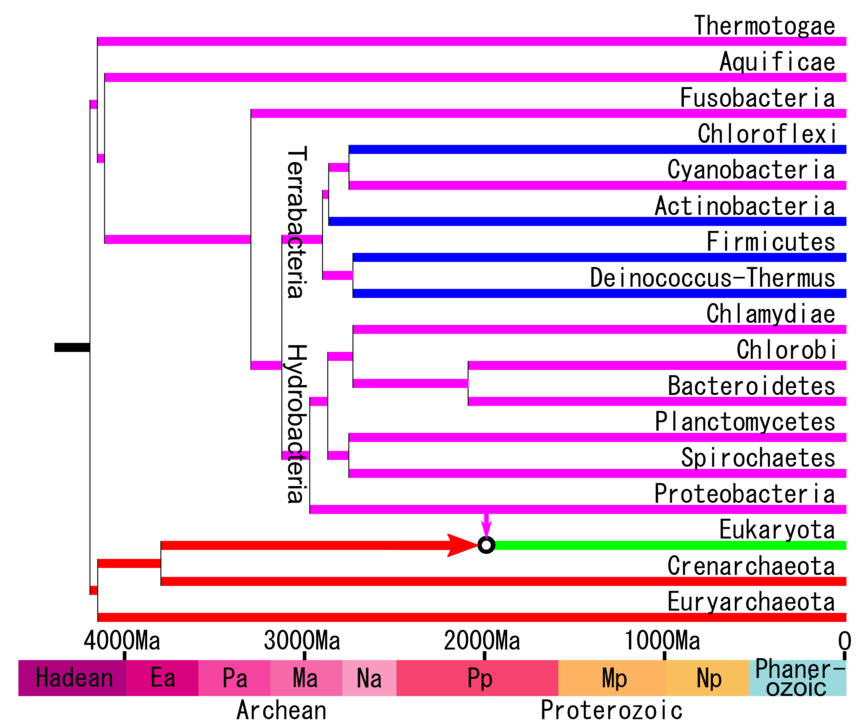Hydrobacteria
| Hydrobacteria | |
|---|---|

| |
| Escherichia coli cells magnified 25,000 times | |
| Scientific classification | |
| Domain: | Bacteria |
| Clade: | Hydrobacteria Battistuzzi and Hedges 2009[1] |
| Superphyla/Phyla | |
| |
Hydrobacteria is a taxon containing approximately one-third of prokaryote species, mostly gram-negative bacteria and their relatives.[1] It was found to be the closest relative of an even larger group of Bacteria, Terrabacteria, which are mostly gram-positive bacteria.[2][1] The name Hydrobacteria (hydro = "water") refers to the moist environment inferred for the common ancestor of those species. In contrast, species of Terrabacteria possess adaptations for life on land.[2][1]
The content of Hydrobacteria has grown to include these superphyla and phyla:
Some unrooted molecular phylogenetic analyses[5][6] have not supported this dichotomy of Terrabacteria and Hydrobacteria, but the most recent genomic analyses,[3][4] including those that have focused on rooting the tree,[3] have found these two groups to be monophyletic.
Hydrobacteria and
"Gracilicutes," which was described in 1978 by Gibbons and Murray,[8] is sometimes used in place of Hydrobacteria. However, "Gracilicutes" included cyanobacteria (a member of Terrabacteria) and was not constructed under the now generally accepted three-domain system.[8] More recently, a redefinition of "Gracilicutes" was proposed[9] but it did not include a molecular phylogeny or statistical analyses. Also, it did not follow the three-domain system, claiming instead that the lineage of eukaryotes + Archaea is nested within Bacteria as a close relative of Actinomycetota, a tree not supported in any molecular phylogeny.
Phylogeny
The definition of two major divisions within the domain Bacteria, Hydrobacteria and Terrabacteria, has come largely from rooted phylogenetic analyses of genomes.[2][1][3][4] Unrooted analyses have not fully supported this division,[6][5] drawing attention to the importance of rooted trees of life.
The two recent analyses of bacterial phylogeny both supported the division of Hydrobacteria and Terrabacteria.[3][4] However, they interpreted the evolution of the cell wall differently, with one concluding that the last common ancestor of Bacteria was a monoderm (gram-positive bacteria[3]) and the other concluding that it was a diderm (gram-negative bacteria[4]). The following tree is redrawn from one of those two recent studies,[3] showing the phylogeny of bacterial phyla and superphyla, with the position of Fusobacteria being unresolved and DST being the closest relative of Terrabacteria:
-
A phylogeny of bacterial phyla and superphyla according to Coleman et al. (2021).[3] Hydrobacteria was referred to as "Gracilicutes" in that study.


![A phylogeny of bacterial phyla and superphyla according to Coleman et al. (2021).[3] Hydrobacteria was referred to as "Gracilicutes" in that study.](http://upload.wikimedia.org/wikipedia/commons/c/ce/Bacterial_phyla_and_superphyla.png)